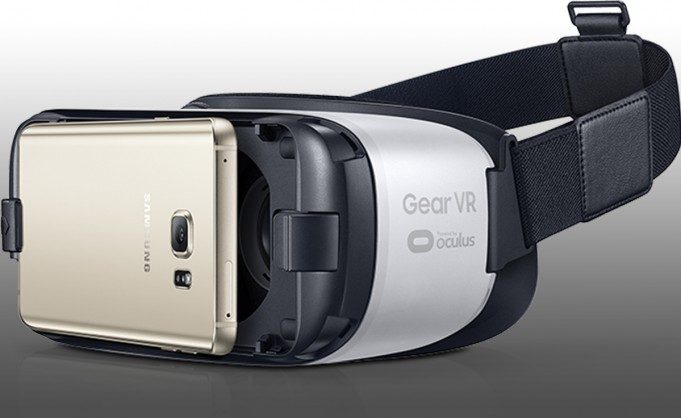 Ben Lang jokes that we’ve been at ‘Year Zero’ of VR for three years now, and the official release of the Gear VR today marks the first official launch of a consumer-ready virtual ready head-mounted display. Ben joins me on the podcast to talk about some of the technical details that allow the Gear VR to drive such a compelling virtual reality experience, as well as some analysis of the larger virtual reality market. There are a lot of high expectations that virtual reality will be able to grow and evolve into the ultimate potential that we all hope it can be, and so we take a look at how the smartphone market evolved over time and what we can expect to see over the next year.
Ben Lang jokes that we’ve been at ‘Year Zero’ of VR for three years now, and the official release of the Gear VR today marks the first official launch of a consumer-ready virtual ready head-mounted display. Ben joins me on the podcast to talk about some of the technical details that allow the Gear VR to drive such a compelling virtual reality experience, as well as some analysis of the larger virtual reality market. There are a lot of high expectations that virtual reality will be able to grow and evolve into the ultimate potential that we all hope it can be, and so we take a look at how the smartphone market evolved over time and what we can expect to see over the next year.
LISTEN TO THE VOICES OF VR PODCAST
Today is the consumer launch of Samsung’s Gear VR, and I talked with Road to VR’s Ben Lang about some of the hardware that allows the Gear VR to drive such a compelling VR experience, some of the improvements that have been made over the last couple of iterations, and some of the larger issues that we’ve already started to see with Android fragmentation across versions of Android and different versions of Samsung phones. There have been various compatibility and performance bumps along the road across different hardware and software versions, but hopefully those will be minimized now that the Gear VR has moved beyond being an ‘Innovator Edition’ and is now released as a full fledged consumer product.
See Also: Oculus Lists Gear VR ‘Sold Out’ at Best Buy, Amazon & Samsung Still Stocked
My initial reaction to the Gear VR was like many people’s: “Wow! This is a lot better than I expected it would be.” The Gear VR doesn’t have positional tracking like the Oculus Rift DK2, but yet the resolution is actually higher and there’s an imperceptible difference in terms of latency and immersion that can still happen with the untethered Gear VR HMD.
It’s actually quite amazing that the Gear VR can drive the quality of experience by being powered by a cell phone. For $99, it’s a bit of a no-brainer to get the Gear VR if you already a Samsung Galaxy Note5, Galaxy S6 edge+, Galaxy S6 or Galaxy S6 Edge.
Not having to deal with any wires and the portability and ease at which you can carry the Gear VR around has proven to be an extremely convenient way to share high-quality virtual reality experiences with friends and family or at virtual reality conferences and meetups. I’ve found that the added benefit of positional tracking is not worth the effort to unhook all of the wires of my desktop PC and deal with transporting it around along with a monitor and an Oculus Rift DK2.
It’s true that the Gear VR can’t yet drive the same level and fidelity of VR experiences as a PC can, but it’s certainly good enough. The simplicity and ease that it offers to be able to quickly share a VR demo is such a higher benefit than having to deal with the hassle it takes to show a DK2 experience on-the-go.
Ben and I talk about what to expect from here now that the first consumer virtual reality headset has been released. The consensus seems to be that it’s still at the very beginning of consumer VR, and the ecosystem is going to take time to develop and mature. Ben says that VR is still evolving through a three-way chicken and egg problem between VR headset manufacturers, VR game and experience developers, and consumers.
Oculus kickstarted the hardware side of things with the Oculus Rift in 2012 and the Gear VR (in conjunction with Samsung) starting in late 2014. They were the first company to provide a comprehensive SDK so that software developers could start to create consumer virtual reality experiences. Now developers have had three years to experiment with the medium and create the first VR games and experiences, the VR community is ready to start bringing this hardware and experiences to the public.
And because it’s already been three years since Oculus reignited this space, there’s a perception and anticipation for the VR ecosystem to explode into the mainstream. But Ben cautions this line of thinking by saying that it’s more likely to take more time to fully grow and develop the market and full ecosystem. There are a lot of lessons to learn from the smartphone market, and it’s not entirely accurate to look to the wildly successful iPhone launch as a template for what’s going to happen with VR. The iPhone wasn’t the first smartphone to ever launch, and there had been millions of smart phone users that had to be slowly cultivated over many years to reach an inflection point.
There’s a lot of anticipation and excitement within the VR community, and there are a lot of indie developers and start-up companies that will have to plan on how they’re going to make it through this first year of consumer VR that may end up being a smaller market that is not going to be able to completely financially sustain them just yet.
Ben says that the snowball will have to passed back and forth a number of times between the VR hardware manufacturers, VR software developers, and consumers before it is able to start to take off in any type of exponential growth curve. But with the release of the Gear VR today with a store filled with VR games and experiences, VR is finally ready to be introduced into a wider mass-consumer audience.
With that, I just wanted to congratulate the Oculus and Samsung teams, and all of the VR developers who have helped get VR to this point. It’s actually really quite amazing to think about all of the work that it’s taken to get to this point, and it’s exciting to see VR cross this chasm into mainstream and start making all of our VR dreams come true.
Become a Patron! Support The Voices of VR Podcast Patreon
Theme music: “Fatality” by Tigoolio







